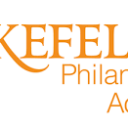A few months ago I began working on a project with my colleagues at Rockefeller Philanthropy Advisors (RPA) to engage the philanthropy sector in the Post-2015 Development Agenda and Sustainable Development Goals (SDGs) process. My first direct encounter with the UN came when I attended a special event entitled Multi-stakeholder partnerships: Making them work for the Post-2015 Development Agenda in the UN ECOSOC ( Economic and Social Council) chamber.
The event focused on partnership. The existing Millennium Development Goals (MDGs) officially end in 2015, and there has been a lot of reflection and evaluation around what has and hasn’t worked. One thing that seems to be generally accepted is that partnerships between sectors have more chance of effecting change than entities acting on their own – an obvious conclusion, but one that’s not always taken into account. The UN, governments, NGOs, other civil society organizations and the private sector all have a role in achieving the SDGs, but the chance of strategic change rises considerably if they work together. Notable is that philanthropy is the sector most often not at the table.
Getting these unwieldy entities to talk to each other, let alone understand each other, comes with a unique set of challenges. Even when two entities think they have the same goal, nuances can get lost in translation. Months or years later, the two entities, both doing good work, may discover that they are not in fact working towards the same goal.
The ECOSOC event was an opportunity to discuss lessons learned from the MDGs partnership process. If there was one theme that emerged from both sessions, it was that no one wants to conduct ‘business as usual’. A detailed review of 330 partnerships established as a result of the 2002 World Summit on Sustainable Development was undertaken by the International Civil Society Centre in 2014 and found that 38 per cent of partnerships were simply not active or had no measurable output; 26 per cent showed activities, but not directly related to their publicly stated goals; and only 24 per cent had outputs aligning with their stated goals.
According to panellist Hesphina Rukator, founding director of the Centre for African Development Solutions, excitement about forging effective partnerships during the MDG process was tangible. Many organizations pledged to enter into lasting relationships that would ultimately benefit underserved populations across the world. So what went wrong?
The first session was primarily devoted to identifying challenges and successes in partnerships in general. A lot of what was discussed could be defined as common sense, but I found myself noting points to remember and use. The second session consisted of members of successful cross-sector partnerships relating what worked for them and what didn’t. While there were some lessons which are unique to UN partnerships, I was struck by how universal the foundations of successful partnerships are.
A good relationship, be it between individuals, organizations or governments, is based on trust and confidence. Obvious, but how often does that bit of common sense fall by the wayside? I thought it telling that at least two of the panellists spoke about partnerships in terms of a romantic relationship. We can all relate to negotiating the timing of awkward yet essential discussions in the dating world. The trick is determining when to unpack the unmentionables. The first date can be too soon, and could scare off a potential catch, but hold off too long and your partner can feel misled, lied to, or foolish when things eventually come to light. Without the trust and confidence to share issues as they arise, partners may simply drift apart.
Imagine the complexities involved if you’re forming a partnership with the goal of ending poverty or hunger. Imagine simply trying to find the ‘right’ people, and finding a venue, a common language and a common goal. And yet, amazing things have been accomplished when solid partnerships form.
Here are some of the ‘how to’ elements of forging effective partnerships. First, it requires time to build trust and confidence between partners. We must determine shared values, understand differences, and acknowledge the different scales of partner organizations and power dynamics. Second, each partnership must have a clearly defined vision and goals at the beginning of the project, with clear outcomes dispute resolutions in place from the beginning. Third, accountability is key: public ownership of common goals will help, and it must be established early how, when and by whom actions will be taken. Fourth, inclusion is important: don’t discuss issues affecting a population without including them in the conversation. When dealing with the private sector, especially, many donors would like to be participants rather than just cheque writers. Fifth, think about the time required. Projects should not be rushed, and flexibility must be built in to adjust strategies/approaches/timelines, without allowing the original mission to be compromised. And sixth, strategically evaluate progress, which could well mean rethinking and restructuring reporting requirements. Cross-sector measurement and evaluation may look very different from what we use now.
When I left the meeting, I was encouraged and energized to be a part of the process. With so many crucial goals represented by the SDGs, we owe it to ourselves to be on the lookout for potential partnerships and to start off in a spirit of trust.
Donita Volkwijn is an RPA associate.




Comments (0)